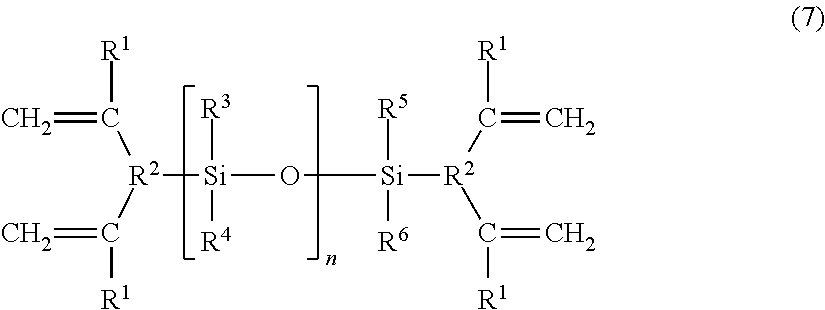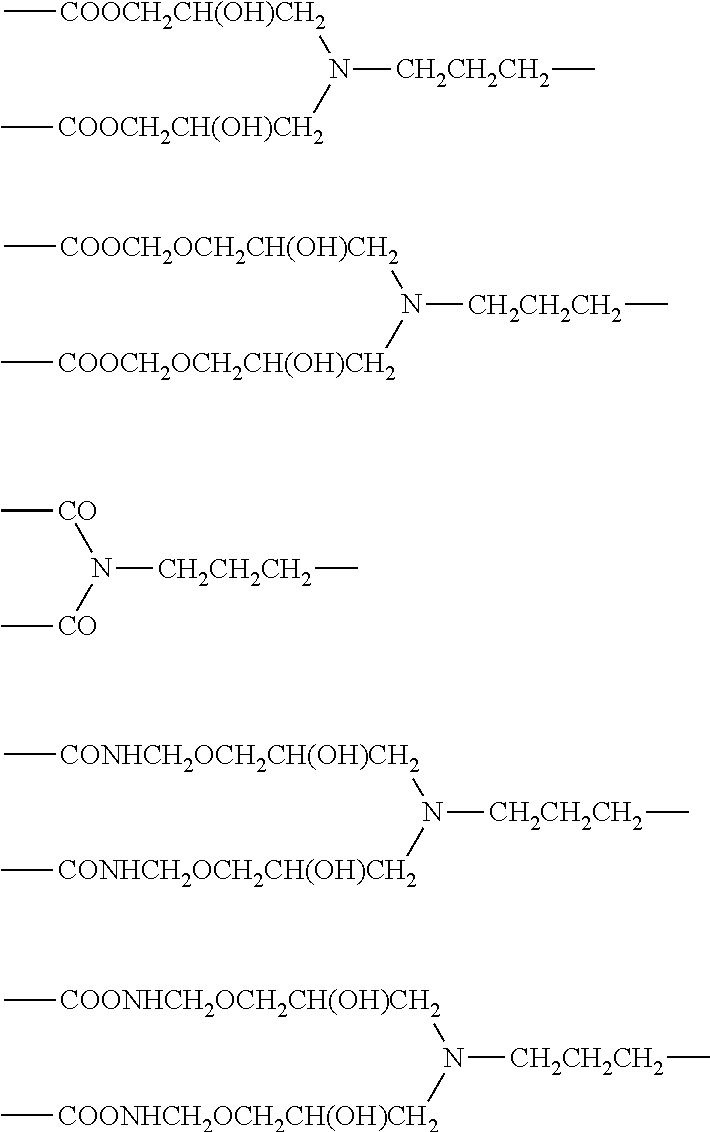Black composition, black coating composition, resin black matrix, color filter for liquid crystal display and liquid crystal display
a technology of resin black matrix and composition, applied in the direction of photosensitive materials, instruments, photomechanical devices, etc., to achieve the effect of high od value, high od value, and high adhesiveness
- Summary
- Abstract
- Description
- Claims
- Application Information
AI Technical Summary
Benefits of technology
Problems solved by technology
Method used
Image
Examples
example 1
[0074]Titanium dioxide powder (4.0 kg) having an average diameter of primary particle of 40 nm was fed to a reaction furnace and then ammonia gas was flown in the furnace at a linear velocity of 6 cm / sec, followed by carrying out reaction at a furnace temperature of 850° C. for 9 hours to obtain titanium nitride oxide A (3.2 kg). The diffraction spectrum of the powdery titanium nitride oxide A as a light shading agent was measured with an X-ray diffractometer manufactured by Rigaku Corporation. As a result, the I1, I2, and I3 were 36 cps, 36 cps and 818 cps, respectively, the X-ray intensity ratio R1, was 0.82 and the X-ray intensity ratio R2 was 1.00.
[0075]In γ-butyrolactone solvent (3825 g), pyromellitic dianhydride (149.6 g), benzophenone tetracarboxylic dianhydride (225.5 g), 3,3′-diaminodiphenyl sulfone (69.5 g), 4,4′-diaminodiphenyl ether (210.2 g) and bis-3-(aminopropyl)tetramethylsiloxane (17.4 g) were reacted at 60° C. for 3 hours. Maleic anhydride (2.25 g) was added, and t...
example 2
[0077]Titanium dioxide powder (4.0 kg) having an average diameter of primary particle of 50 nm was fed to a reaction furnace and then ammonia gas was flown in the furnace at a linear velocity of 5.5 cm / sec, followed by carrying out reaction at a furnace temperature of 850° C. for 8 hours to obtain titanium nitride oxide B (3.1 kg). The diffraction spectrum of the powdery titanium nitride oxide B was measured with an X-ray diffractometer manufactured by Rigaku Corporation. As a result, the I1, I2 and I3 were 41 cps, 73 cps and 775 cps, respectively, the X-ray intensity ratio R1 was 0.71 and the X-ray intensity ratio R2 was 1.78. The same procedure as in Example 1 was carried out except that the titanium nitride oxide B was used as a light shading agent to form a light shading film for resin black matrix. The obtained light shading film for resin black matrix had a film thickness of 0.8 μm and an OD value of 3.51. The obtained light shading film for resin black matrix was subjected to...
example 3
[0078]Titanium dioxide powder (4.0 kg) having an average diameter of primary particle of 45 nm was fed to a reaction furnace and then ammonia gas was flown in the furnace at a linear velocity of 6.5 cm / sec, followed by carrying out reaction at a furnace temperature of 800° C. for 8 hours to obtain titanium nitride oxide C (3.2 kg). The diffraction spectrum of the powdery titanium nitride oxide C was measured with an X-ray diffractometer manufactured by Rigaku Corporation. As a result, the I1, I2 and I3 were 49 cps, 42 cps and 802 cps, respectively, the X-ray intensity ratio R1 was 0.78 and the X-ray intensity ratio R2 was 0.86. The same procedure as in Example 1 was carried out except that the titanium nitride oxide C was used as a light shading agent to form a light shading film for resin black matrix. The obtained light shading film for resin black matrix had a film thickness of 0.8 μm and an OD value of 3.55. The obtained light shading film for resin black matrix was subjected to...
PUM
| Property | Measurement | Unit |
|---|---|---|
| particle average diameter | aaaaa | aaaaa |
| angle of diffraction 2θ | aaaaa | aaaaa |
| 2θ | aaaaa | aaaaa |
Abstract
Description
Claims
Application Information
 Login to View More
Login to View More - R&D
- Intellectual Property
- Life Sciences
- Materials
- Tech Scout
- Unparalleled Data Quality
- Higher Quality Content
- 60% Fewer Hallucinations
Browse by: Latest US Patents, China's latest patents, Technical Efficacy Thesaurus, Application Domain, Technology Topic, Popular Technical Reports.
© 2025 PatSnap. All rights reserved.Legal|Privacy policy|Modern Slavery Act Transparency Statement|Sitemap|About US| Contact US: help@patsnap.com



